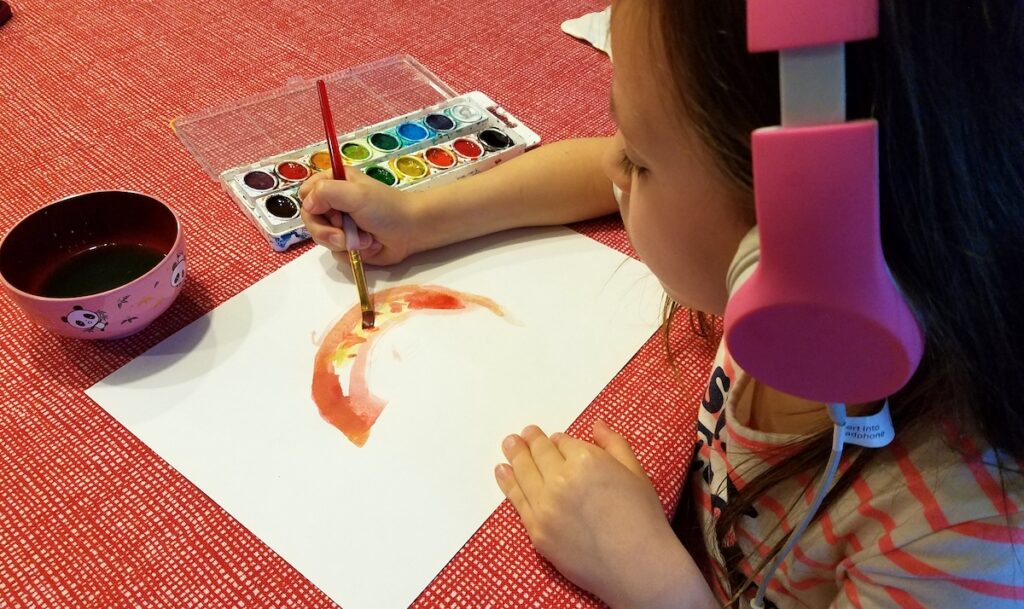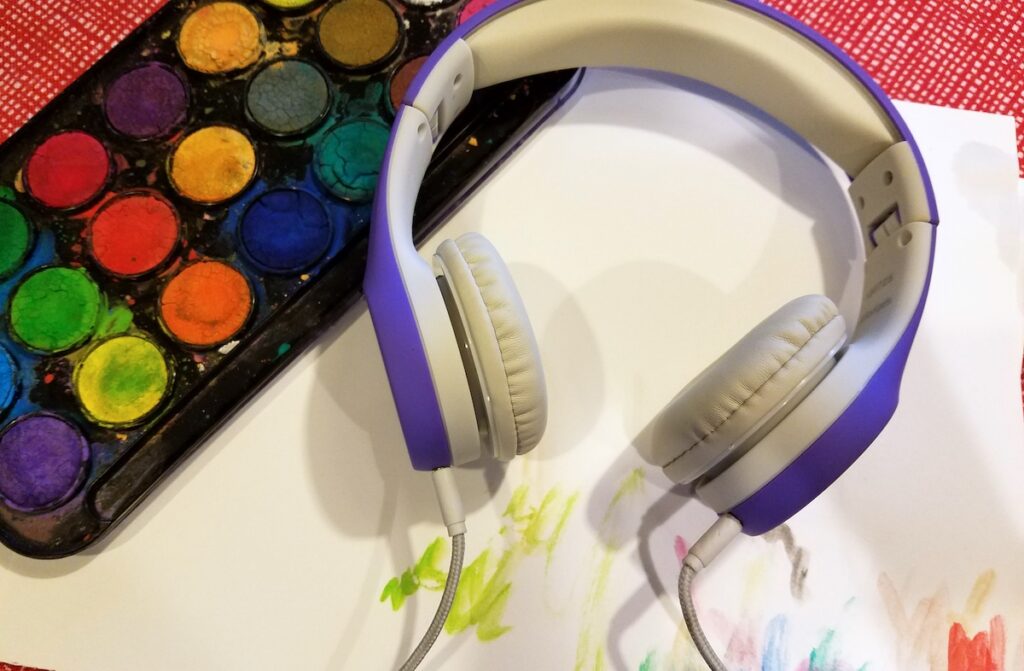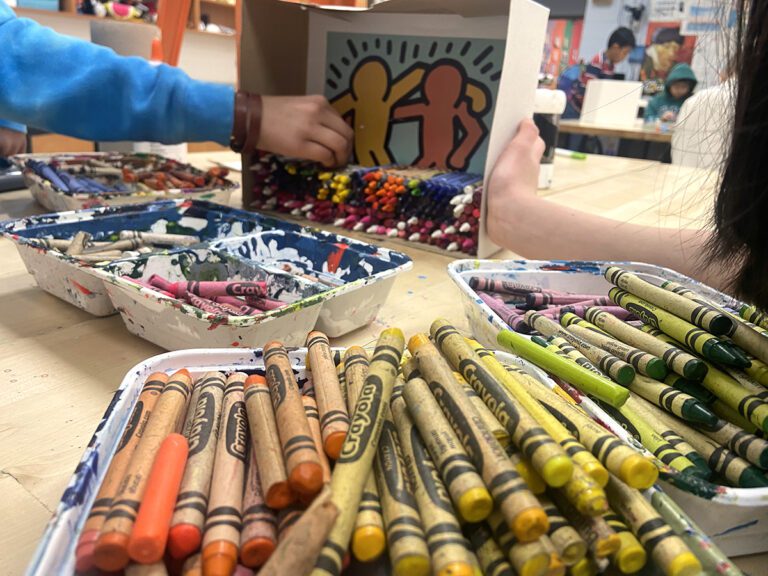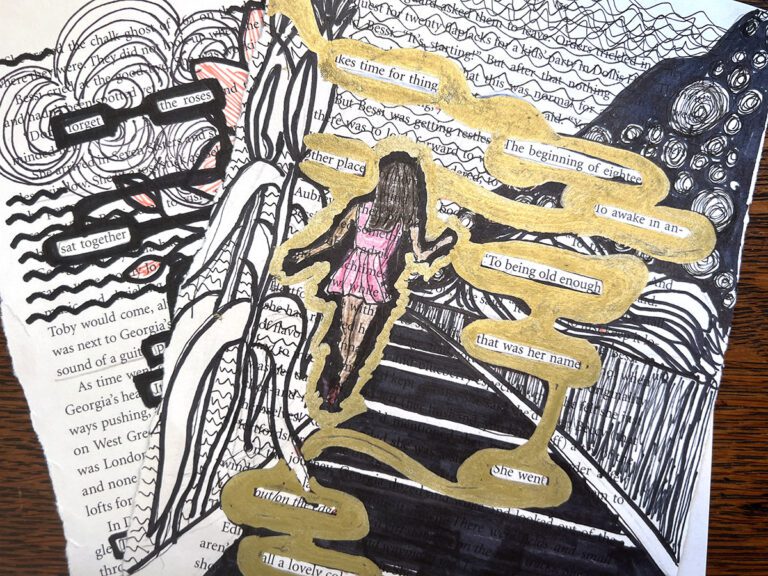On the rare occasion when I have a free evening to myself, I love to listen to music while I’m working. Personally, I find music to be a powerful tool to influence my art. Tempo can affect my working speed, mood can alter the subject I create, and volume seems to stimulate my intensity.
Of course, this is true in the art classroom, too. Music can be a powerful tool to motive and inspire. But, sometimes students can get distracted by lyrics. Rather than using a song as inspiration, they can get bogged down in word meaning, obsess about the “coolness” of a particular artist, or focus too much on literal imagery.
So, how can art teachers use music to their advantage within the art room?
Luckily, I work with an extremely talented and insightful music teacher, Mike McHugh. To facilitate intentional listening, he has curated a list of classical songs that embody a variety of emotions, perfect for art instruction. These songs have been handpicked to affect a certain mood or feeling within the classroom. Here are a few Mike has suggested for your students’ listening pleasure…
24 Songs to Influence the Mood in Your Classroom
Anger
- “Mars” from The Planets by Gustav Holst
- “Totentanz” by Franz Liszt
- “Fratres for Cello and Piano” by Arvo Part
Joy
- “Jupiter” from The Planets by Gustav Holst
- The overture of “The Marriage of Figaro” by W. A. Mozart
- “Boléro” by Maurice Ravel
Love
- The love theme from Romeo and Juliet by P. Tchaikovsky
- “Nocturne in B Flat” by I.J. Paderewski
- Piano Concerto No. 2 by Sergei Rachmaninov

Sadness
- String Quartet No.8 in C Minor by Dmitri Shostakovich
- “Komm, süsser Tod” by J.S. Bach
- “Sigfried’s Funeral March” by Richard Wagner
Suspense
- The theme from Psycho by Bernard Herrmann
- “Hall of the Mountain King” by Edvard Grieg
- “Adagio” from Music for Strings, Percussion, and Celesta by Bela Bartok
Spooky
- “Night on Bald Mountain” by Modest Mussorgsky
- “Der Erlkoenig” by Franz Schubert
- “Danse Macabre” by Camille Saint-Saens

Calm
- “Claire de Lune” by Claude Debussy
- “Adagio for Strings” by Samuel Barber
- “Trois Gymnopedies” by Erik Satie
Victory
- The theme from Star Wars by John Williams
- “1812 Overture” by P.I. Tchaikovsky
- The theme from Chariots of Fire by Vangelis
Once you add these songs to your classroom playlists, the instructional possibilities are endless! You could pair a song with a drawing prompt of the same mood, or the song could be a drawing or painting prompt itself. These selections could be an extension activity within an art history lesson, requiring a student to match each one with a familiar painting. As the teacher, you could even attempt to influence the class pace with faster or slower selections from these playlists.
Mike’s suggestions have been invaluable to me, and they might serve as an interesting conversation starter with your music teacher, too. Brainstorming these songs was a simple task for him, and it turned out he was hoping for the reciprocal from me. He was searching for a list of paintings that embodied visual emotions to aid with instruction. This could be a demanding task for a music teacher but takes an art teacher only moments to produce. So, consider sharing this song list with your music teacher. Ask him/her to help you add to it. It could end up being a beautiful starting place for an art/music collaboration!
How do you use music in your classroom?
What other selections would you or your music teacher add to this list?
Magazine articles and podcasts are opinions of professional education contributors and do not necessarily represent the position of the Art of Education University (AOEU) or its academic offerings. Contributors use terms in the way they are most often talked about in the scope of their educational experiences.






